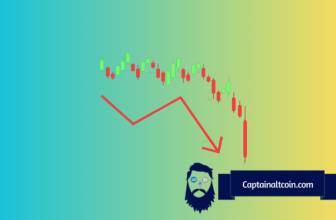
A Hyperliquid community member has sparked debate across the crypto space with a post contrasting fully onchain transparency with how centralized exchanges (CEXs) handle – and often underreport – liquidation data.
The discussion gained traction after the user shared a screenshot from Binance’s liquidation order documentation, highlighting how the exchange’s reporting structure could significantly downplay the scale of real-time liquidations during volatile periods.
What you'll learn 👉
Hyperliquid: “Everything Happens Onchain”
In the tweet, the user explained why Hyperliquid’s infrastructure stands apart from CEXs:
“Hyperliquid is a blockchain where every order, trade, and liquidation happens onchain. Anyone can permissionlessly verify the chain’s execution, including all liquidations and their fair execution for all users.”
They emphasized that Hyperliquid’s transparency allows anyone to verify system solvency in real time – a feature nearly impossible to replicate on centralized platforms.
“Transparency and neutrality,” the post continued, “are key reasons that fully onchain DeFi is the ideal infrastructure for global finance.”
Hyperliquid’s fully onchain liquidations cannot be compared with underreported CEX liquidations
— jeff.hl (@chameleon_jeff) October 13, 2025
Hyperliquid is a blockchain where every order, trade, and liquidation happens onchain. Anyone can permissionlessly verify the chain’s execution, including all liquidations and their… pic.twitter.com/K5sv74LJgO
CEX Liquidation Reporting Under Scrutiny
The post then referenced Binance’s Liquidation Order Streams documentation – the same image included in the tweet – which states:
“For each symbol, only the latest one liquidation order within 1000ms will be pushed as the snapshot. If no liquidation happens in the interval of 1000ms, no stream will be pushed.”
In plain terms, even if there are thousands of liquidations in a single second, Binance’s system will report only one.
The Hyperliquid member pointed out that this design means liquidation activity during major crashes could be underreported by up to 100x, creating a misleading picture of real market conditions.
“Some CEXs publicly document that they dramatically underreport user liquidations,” they wrote. “Because liquidations happen in bursts, this could easily be 100x under-reporting under some conditions.”
Read also: Here’s Where Hyperliquid (HYPE) Price Could Be Headed in October
Transparency vs. Trust
The tweet concluded with a call for change across the industry:
“Hopefully the industry will see transparency and neutrality as important features of the new financial system, and others will follow.”
The message resonated with many in the DeFi community, especially in the aftermath of the October 11 crash, when questions about exchange risk management and liquidation handling dominated crypto discussions.
Hyperliquid’s fully onchain model – where every liquidation, position, and solvency metric is publicly verifiable – has become a clear point of contrast against centralized platforms that rely on opaque internal reporting.
Subscribe to our YouTube channel for daily crypto updates, market insights, and expert analysis.








